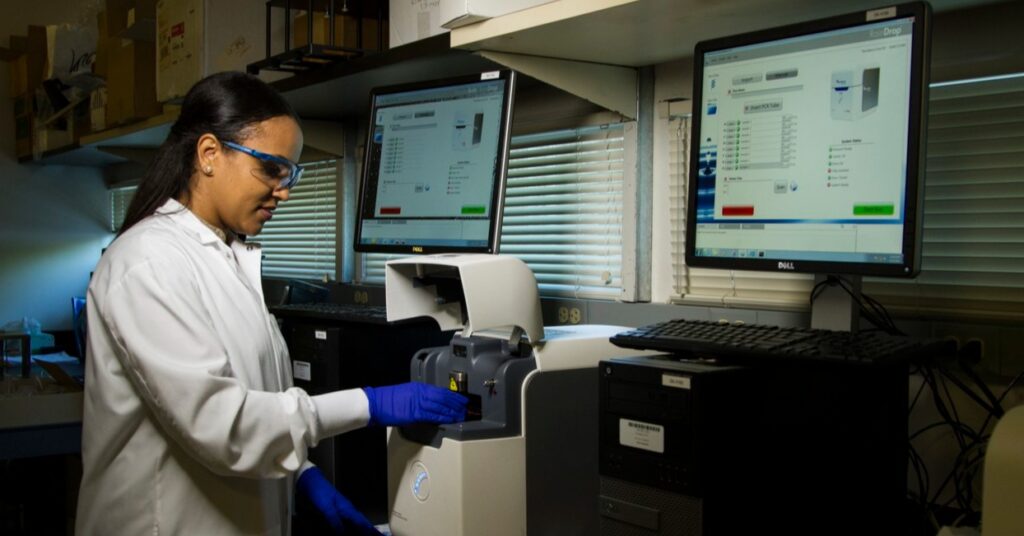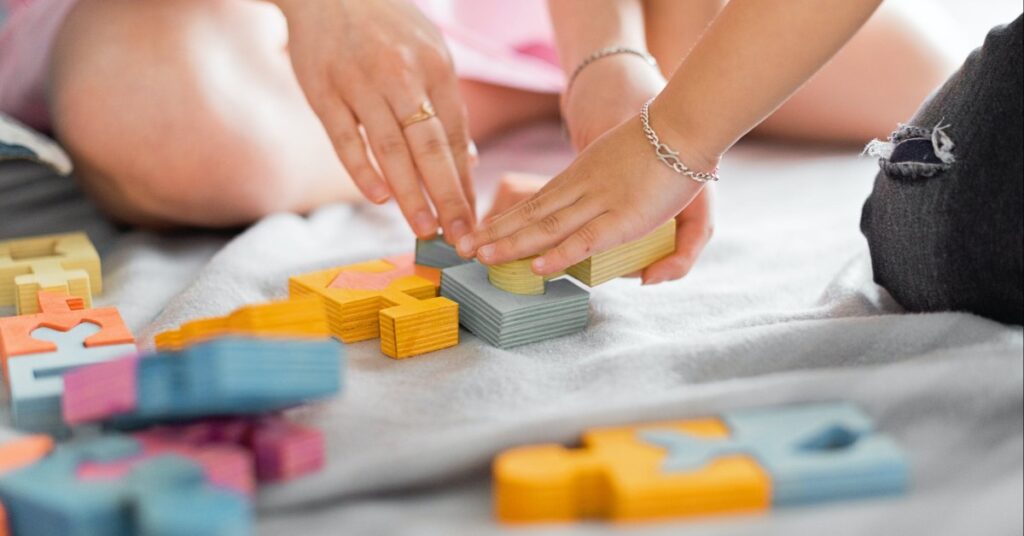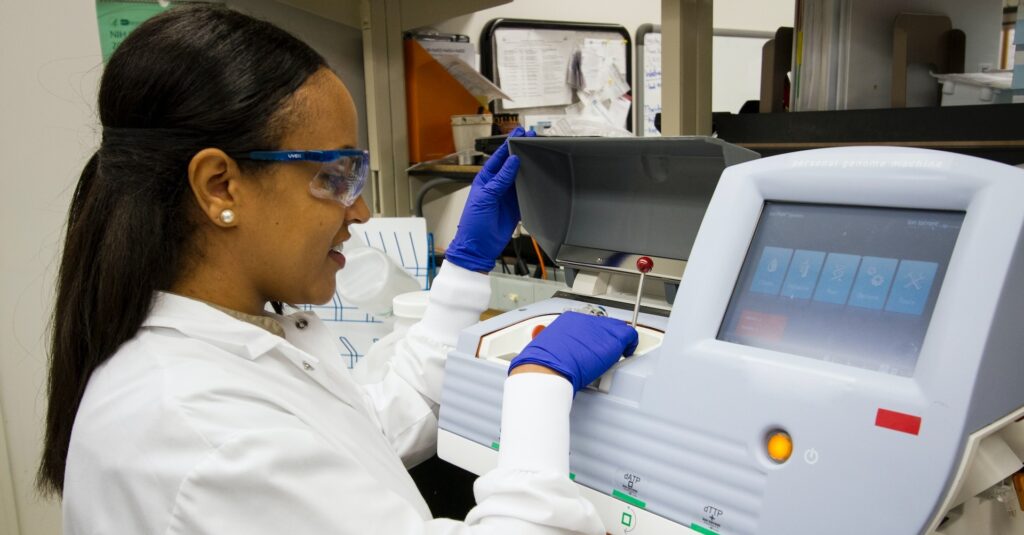
What Is the Epidemiological Triangle?
The epidemiological triad or triangle is an organized methodology used [...]

When it comes to seeking therapeutic support services for children, parents are the first line of defense. Their observation of a child’s social and physical skill development at home facilitates early intervention for children who show signs of developmental delays ot sensory processing differences, or who may be on the autism spectrum.
As with any therapeutic plan, a pediatric occupational therapist begins treatment with a careful assessment of the child and their environment, in conversation and with input from the child’s parents and caregivers. They observe the child’s fine motor skills, oral motor skills and language development, visual perceptual skills, and sensory needs to determine whether there are any delays or special needs that need to be addressed. A careful assessment of a child’s current level of ability and how they interact with their environment allows for the best evaluation and occupational therapy (OT) treatment plan.
A child diagnosed with ADHD or who is on the autism spectrum raises unique concerns. Once the occupational therapist has determined a child’s level of ability, they create a list of goals and strategies to work on, such as eating, grooming, writing, coloring, or cutting with scissors. Each of these goals is practiced with the occupational therapist in half-hour to hour-long sessions a few times a week—depending on the child’s needs—and is supported by the caregiver in practice at home.
Children with other sensory and motor skills issues also benefit from working with an occupational therapist. In recent pandemic years, many young children stayed home from preschool and pre-K programs to help protect them from the virus. Unfortunately, this meant that they missed out on critical practice time for socialization with other children and fine motor skills practice, like pencil holding, sorting, and scissor skills—all of which led to real mental and physical challenges when they arrived back in the classroom.
As Dr. Tanya Altmann, assistant clinical professor at the University of California, Los Angeles, Mattel Children’s Hospital and a spokesperson for the American Academy of Pediatrics noted in The New York Times, “We are now seeing many kids who have lost not just learning, but coordination and fine motor skills” due to pandemic school closures, and many will need occupational therapy to work on developing fine motor skills and improving eye-hand coordination.
As well, too much screen time (which certainly took place during the pandemic) and too little physical activity can lead to delays in development. The Journal of the American Medical Association (JAMA) reports that US children “aged 0 to 8 years live in a home with an internet-connected device and, on average, spend over 2 hours a day on screens.” This amount of screen time can negatively impact self-regulation, socialization, and gross motor skill development, and can “impinge on children’s ability to develop optimally.”
Of course, children naturally develop at different rates and speeds, and typically reach developmental markers in their own in due time. When they have questions, parents can consult a professional occupational therapist who will determine what is typical for skill development and whether any OT interventions are necessary.
In many ways, toys are obvious and perfect occupational therapy tools. They’re used to work on a child’s sensory issues or strengthening their fine motor skills and gross motor skills while fully engaging them in their treatment.
Fine motor activities include work with tweezers (e.g., sorting buttons and beads), playing a board game, or using markers, paintbrushes, or scissors. These exercises help with hand strengthening, muscle development, and stamina, all critical for the early childhood classroom.
Gross motor skills are strengthened by play with trampolines, stability balls, and crawl tunnels, all of which develop balance, bilateral coordination, and motor planning. These exercises concentrate on moving the whole body and learning how to move through space.
Sensory activities are particularly helpful in working with children with autism, sensory processing disorders and ADHD. Sensory toys like weighted stuffed animals, scented putty, and bubbles, and sensory bins full of dry rice and beans or shaving cream encourage sensory play and tactile discovery.
Occupational therapy helps establish play-based routines that can support children as they work on problem-solving and self-regulation, as well as bilateral coordination, color recognition, dexterity and hand strength, hand-eye coordination and visual motor skills, and motor planning.
In addition to our five senses—sight, hearing, touch, smell, and taste—humans also have sensory systems that interpret sensations from muscles and joints (the proprioceptive system) and the sensation of movement through space (the vestibular system). Children can be much less or much more sensitive to these sensations and may need work to help interpret and process them.
Occupational therapy toys help sensory seekers become more comfortable and in sync with these senses by encouraging children to practice information and sensory processing. This is accomplished by working with fidget toys, putty, weighted toys and blankets, and playing in sensory bins, which provide great practice with interpreting sensory inputs.
Some challenges are more physical and work on muscle strength in both big and small ways. Activities that involve lacing boards, tweezers, pegboards, and scissors all provide occupational therapy for small motor skills and help improve wrist stability and extension, strengthen pencil grasp, and develop eye-hand coordination. Riding a scooter, balancing on a stability ball, and jumping on a trampoline work larger muscles and gross motor skills, helping children learn how their bodies move through space and at what speed.
However, not all occupational therapy tools are about stimulation. Many toys can be used to help calm, focus, and center children. These include fidget toys, wiggle seats, weighted blankets, and music played through headsets. The role of the occupational therapist is to understand the benefits of each activity and the tools that best address each child’s needs.
While work with children in occupational therapy involves a lot of playtime and the use of toys, the science behind this therapy is extensive, and a master’s degree is a requirement for any OT practitioner to achieve fully licensure. While occupational and physical therapy assistants (OTAs and PTAs) can begin work at an entry-level with an associate’s or bachelor’s degree, you’ll need at least a master’s degree to move into full practicing positions. All OT master’s and doctoral programs in the US are regulated by the Accreditation Council for Occupational Therapy Education (ACOTE).
In addition to the completion of your master’s degree at an accredited school, you also must pass the National Board of Certification in Occupational Therapy (NBCOT) examination to earn you license.
Typically, it takes about two years of full-time study to earn your master’s in occupational therapy. Some schools offer some flexibility in their programs. They may shorten the timeline by offering an accelerated course of study if a student has completed their bachelor’s degree in OT, or lengthen it by offering weekend study over seven semesters instead of two.
Most OT graduate programs require either a bachelor’s degree in occupational therapy (or a related health science), or prerequisite coursework in human anatomy and physiology, behavioral science, abnormal psychology, human development, and statistics.
Applicants also must submit official transcripts from all universities and colleges attended (showing a GPA of 3.0 or more), letters of recommendation from professors or supervisors (typically three), proof of relevant work experience (which should include at least 20 documented observation hours), and a personal statement of purpose.
Note that the Occupational Therapist Centralized Application Service (OTCAS) serves as a common application accepted by many OT programs.
International students must meet similar requirements. Additionally, they must hold a bachelor’s from a university approved by the World Federation of Occupational Therapists (WFOT), and they must demonstrate English language proficiency (typically through standardized testing).
Coursework for this degree includes clinical and professional reasoning, functional anatomy, assessment in occupational therapy, mental and behavioral health, therapeutic approaches, biomechanical and neurorehabilitation theory and practice, and productive aging theory. Clinical work with patients constitutes a large component of the curriculum;, and fieldwork runs concurrently with coursework.
In occupational therapy, specialization occurs after students have earned their master’s and are already working in a specialized area of the field. Occupational therapists then have the option to earn certificates through the American Council for Occupational Therapy Education (ACOTE) in areas like pediatrics, speech therapy, autism, mental health, brain injury, and research.
Some top occupational therapy master’s programs include:
(Last Updated on February 26, 2024)
Questions or feedback? Email editor@noodle.com

The epidemiological triad or triangle is an organized methodology used [...]

A family nurse practitioner (FNP) provides comprehensive primary health care [...]

FNPs practice in a broad range of health care settings. [...]

Some epidemiologists assist pharmaceutical companies in developing safer medicines. Some [...]

A Bachelor of Science in Nursing (BSN) is a four-year [...]
Categorized as: Occupational & Behavioral Therapy, Nursing & Healthcare